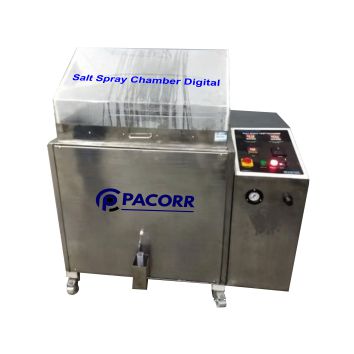
Conduct a Salt Spray Test to Resist Corrosion of Metals
The corrosion of metals is one of the biggest problems that is faced in industries. When metals come in contact with elements such as chemical fumes and moisture, they tend to corrode and this wears off the outer most layer and converts it into rust. Due to corrosion, the strength of the metals is lowered causing the failure of the metal components. The manufacturers of the metal products need to understand the behaviour of the metals when subjected to corrosive environments so that they can make necessary changes to enhance the quality of the products. . There are several tests to do that. One such test is the salt spray test. ASTM B117 is the most widely used quality standards for conducting salt spray tests. The test is used to evaluate the relative corrosion resistance of coated and uncoated materials that are exposed to a salt spray or fog at high temperature. The sample is placed in an enclosed salt spray cabinet and is subjected to a continuous indirect spray of neutral having pH 6.5 to 7.2 salt water solution. This climate is maintained all through the duration of the test.
 The water that is utilised in the ASTM B117 salt spray test should comply with ASTM D1193 specification for reagent water, Type IV. It is mixed with sodium chloride that has a five percent salt solution. When the samples are placed into the chamber, the cabinet should be pre-conditioned to the operating temperature of 35° and fogging a 5% salt solution at the required of 12ml/hr.
The water that is utilised in the ASTM B117 salt spray test should comply with ASTM D1193 specification for reagent water, Type IV. It is mixed with sodium chloride that has a five percent salt solution. When the samples are placed into the chamber, the cabinet should be pre-conditioned to the operating temperature of 35° and fogging a 5% salt solution at the required of 12ml/hr.
The default position for placing the sample is at the 15-30 degree angle from the vertical. Samples are placed in the cabinet to avoid ant dripping of condensation from one sample to another. The cabinet remains closed till its completion except for daily monitoring collection rates and for rotating the samples. The test range in length from 24 to 5000 hours in increments of 24 hours.
In Salt Spray ASTM B117 test the appearance of corrosion products is measured after a period of time. Test duration depends on the corrosion resistance of the coating. The more the corrosion resistant the coating is, the longer the period of testing prior to the appearance of oxides.
The principle application of the Salt Spray Chamber is to enable relatively quick comparisons which are made between actual and expected corrosion resistance with respect to the time taken for oxides to appear on the samples under test. The salt spray test is deployed frequently in a quality audit role. It can check the efficiency of the production process like the surface coating of a metallic part.
Pacorr is a known for Salt Spray Chamber Manufacturer and supplier due to its incredibility and adherence to international standards. The chamber is designed using Triple walled Fiber Reinforced Body which is strong and highly insulated to resist any loss of test conditions like temperature and heat.
Salt Spray Chamber Specification are HMI based touchscreen 7” TFT LCD Color Screen. Test chamber temperature range is 49°C±2°C. The air regulator ranges from 0 to 30 psi.

